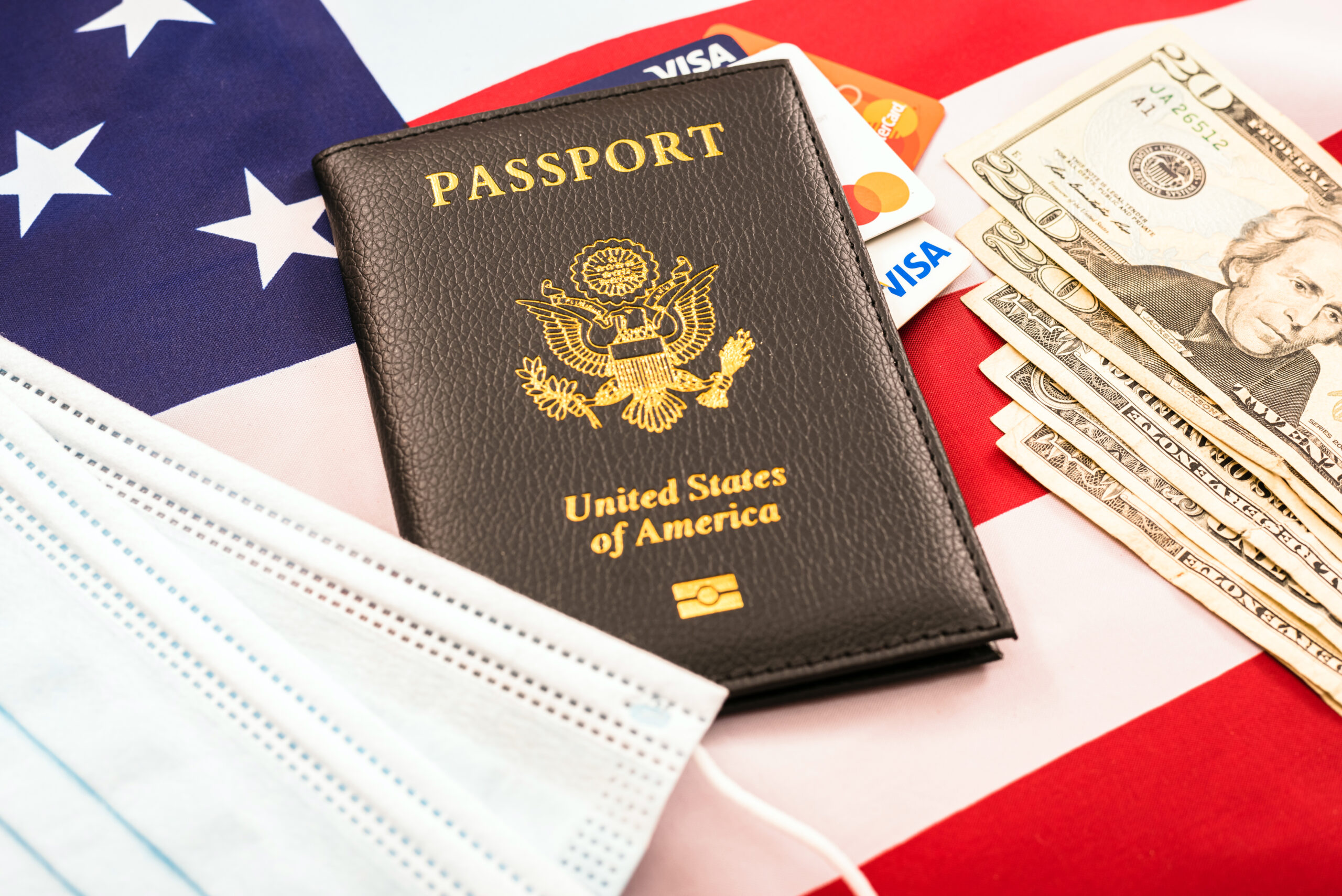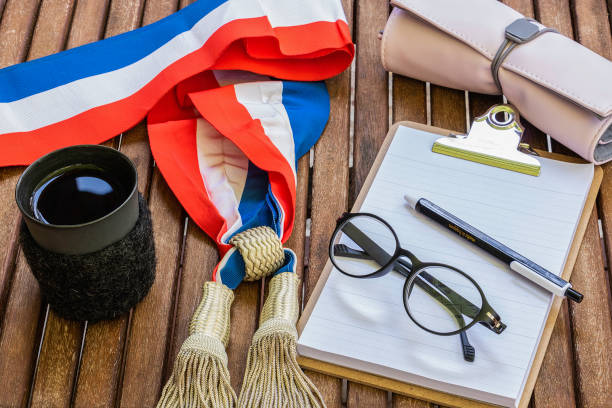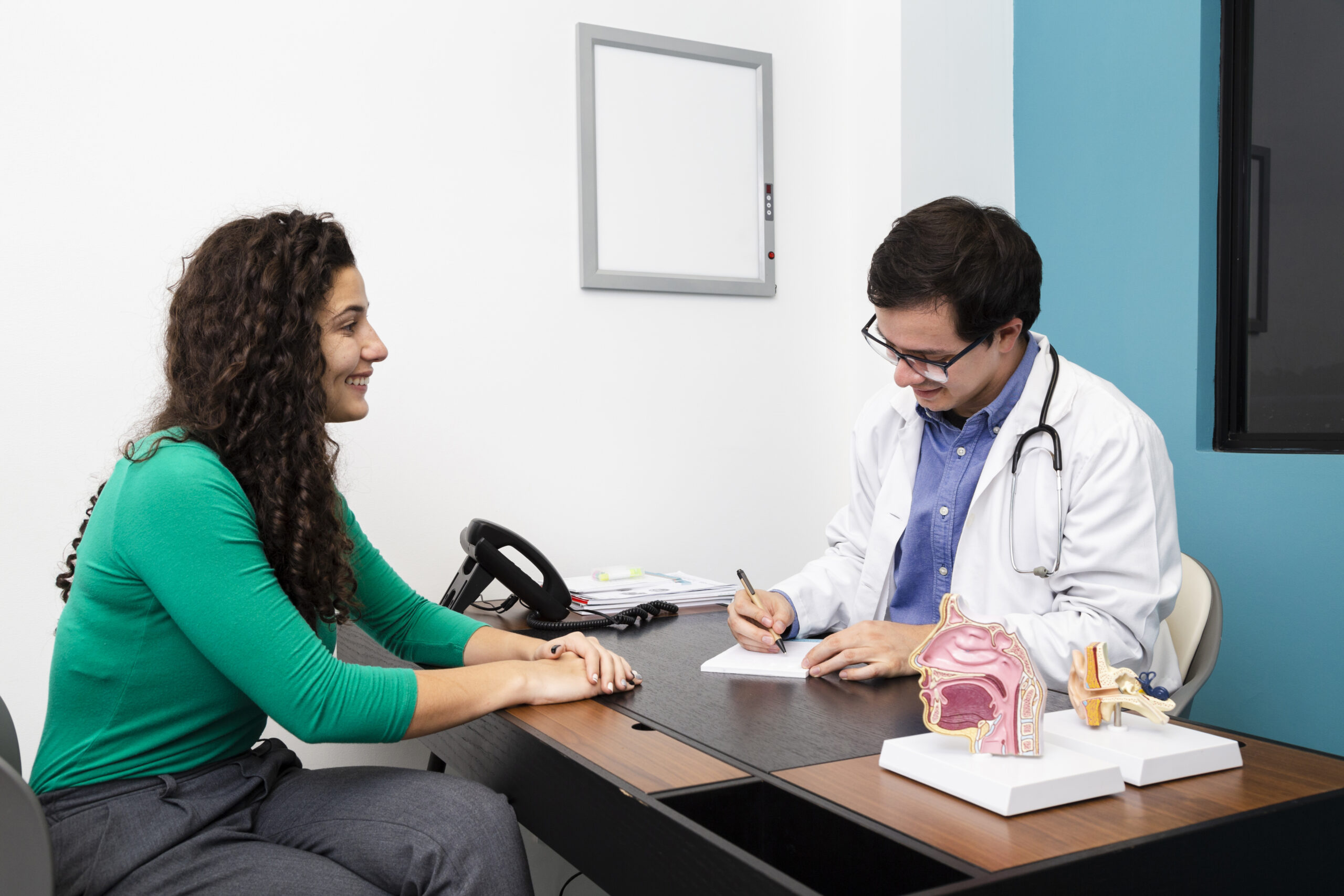Summary
- The process of getting an F1 Student Visa includes receiving an I-20 Form from a certified educational institute in the USA to prove your admission, gathering all the required documents, filling out the visa application form, paying the relevant fees, and appearing in the visa interview.
- An F1 Student Visa is a non-immigrant visa that allows international students to pursue a full-time academic program at an institution in the USA.
- To obtain the F1 Visa, you must get admission to a full-time academic program at a SEVP-approved institution in the USA.
An F1 Student Visa allows you to pursue higher education in the USA. To obtain the F1 Visa, you must get admission to a full-time academic program at a SEVP-approved institution in the USA. This visa not only gives you legal status to study in the country but also authorizes you to work full-time and part-time during your program.
The process of getting an F1 Student Visa includes receiving an I-20 Form from a certified educational institute in the USA to prove your admission, gathering all the required documents, filling out the visa application form, paying the relevant fees, and appearing in the visa interview.
Read below to learn about F1 Student Visa, its requirements, cost, employment opportunities, documents, and more.

What is an F1 Student Visa in the USA?
Before we dig deep into the F1 Visa for the USA, here’s an overview to get a gist of the different aspects of the visa:
| Aspect | Details |
| Definition | An F1 Student Visa is a non-immigrant visa that allows international students to pursue a full-time academic program at an institution in the USA. |
| Why do you need an F1 Visa? | To study a full-time program in the USATo work part-time on-campusTo apply for OPT (Optional Practical Training)/ CPT (Curricular Practical Training) |
| Requirements | Must have been accepted to a full-time academic programMust be proficient in EnglishMust have sufficient fundsMust show intentions of returning to the home country |
| Important documents | An I-20 formA valid passportSEVIS fee payment receiptVisa application fee receiptProof of fundsAcademic transcripts |
| Application process | Step I: Get into a SEVP-approved institution.Step II: Receive an I-20 FormStep III: Pay the SEVIS feeStep IV: Complete the DS-160 formStep V: Complete the visa interview |
| Processing time | 2 to 3 months. The duration may vary based on different circumstances. |
| Working regulations | With an F1 Visa, you can: Work part-time (20 hrs/week) on-campusApply for an OPT (Optional Practical Training) |
| Dependents of the visa holder | The spouse and children can be the dependents.They can apply for an F2 Visa to stay in the country full-time. |
| Health insurance | Not mandatory, but recommended.Some schools may require. |
| F1 visa rejection reasons | Weak ties to the native country, insufficient funds, incomplete documentation, etc, may cause the rejection. |
| Re-application | In the case of rejection, you can re-apply for the F1 Visa. |
Also Read: Study Abroad Guide for Indian Students 2024
Qualifications for an F1 Visa
You must meet certain requirements to obtain an F1 Student Visa for the USA. Here are the qualifications specific to Indian students:
Enrollment in a university in the USA:
To apply for an F1 student visa, you must prove that you will study in the USA. For that, you must:
- Hold an acceptance letter from a SEVP-certified (Student and Exchange Visitor Program) institution
- Have enrolled in a full-time academic program, a degree or a diploma
- Hold an I-20 form issued by the intended university
Good academic records:
The United States Citizenship and Immigration Services (USCIS) has no minimum academic requirements set for an F1 Visa. What constitutes a “good academic record” depends on what your intended institution or program requires. To prove that, you can show the following documents:
- Academic transcripts
- Standardized test results (like the GRE, GMAT, ACT, or SAT)
- Letters of recommendation
Financial Capacity:
You need to prove that you have enough funds to finance your tuition fees and living expenses in the USA for at least the first year of your program. For this, you can submit:
- Bank statements from your account
- An affidavit or confirmation from your sponsor, if any
- Approval letter for an education loan
English language proficiency:
Since programs in the USA are primarily taught in English, you must demonstrate proficiency in that language. Different universities accept different test results. You can opt for tests like IELTS, TOEFL, PTE, DTE, or other exams specific to that institute based on your university’s requirements.
Valid passport:
You must ensure your passport is valid for at least six months after your intended stay in the USA.
Strong ties to your home country:
The F1 student visa is a non-immigrant visa. This means you must intend to return to India. To prove this to USCIS, you must provide strong evidence of your intent to return to your home country after completing your education. You can show documents for employment opportunities, property, family connections, etc.
SEVIS fee:
SEVIS stands for Student and Exchange Visitor Information System. Once you receive your I-20 form from your university, you must pay the SEVIS fee. This payment is mandatory for you to complete your visa application.
Also Read: New F1 Visa Rules for USA: All You Need To Know
Documents required for an F1 Student Visa application and interview
Here is a list of documents that you need to apply for an F1 Student Visa and its interview:
A valid passport:
- As an Indian student, your passport must be valid for at least six months beyond your stay in the USA.
- If your F1 Visa or program ends in two years, your passport must be valid for at least two and a half years.
- If you have your family members as dependents, they must submit individual visa applications.
Visa application:
- You must complete your non-immigrant visa application, i.e., Form DS-160.
- Once completed, you must submit the application confirmation page.
Application fee receipt:
- You must pay a non-refundable visa application fee of $185.
- Keep the receipt with you for the F1 Visa interview.
Photograph:
You will have to submit your photographs while filling out Form DS-160. Those photos must be:
- Clicked within the last six months
- In color
- Facing the camera, showing the full-face view
- Against an off-white or plain white background
- In your daily-wear clothing (no uniforms allowed unless worn for religious purposes)
- With both eyes open and a neutral facial expression
- Such that 69% of the photo’s total height can be measured from the bottom of the chin to the top of the head
- Without a hat (religious cases excluded) and with full-face visibility
- Without any wireless hands-free devices, headphones, and similar items
- Without eyeglasses (unless they can’t be removed due to medical issues)
Form I-20:
- You must submit your F1 I-20 Form, i.e., the Certificate of Eligibility for Nonimmigrant Student Status – For Academic and Language Students.
- Your Designated School Official (DSO).must have signed the form.
- If you have a spouse or minor children as dependents, they will receive an individual I-20 Form.
Additional documents:
At the time of your visa interview, your consular officer might ask for the following documents:
- Your academic transcripts
- Results of standardized tests like the GMAT, GRE, SAT, ACT, IELTS, TOEFL, etc.
- Your intent to return to your home country after completing the course
- Proof of funds
Also Read: Student Visa for USA for Indian Students in 2024
Advantages of an F1 Student Visa for the USA
The USA is known to have some of the top universities and colleges in the world. With an F1 student visa, you can fulfill your dream of studying at one of those universities.
Your student visa also legalizes your status in the country and allows you to immerse yourself in its multicultural environment. Universities in the USA enroll students from across the globe, offering unique opportunities to collaborate, network, understand diverse backgrounds, and gain global exposure.
An F1 Visa allows you to work on-campus. During your academic year, you can work part-time, i.e., 20 hours per week. During holidays, you can work full-time. This not only helps you gain practical experience but also helps you earn money.
How to get an F1 Student Visa for the USA?
Here are five steps you need to follow to get your F1 Student Visa to study in the USA:
Step 1: Get admission to a SEVP-certified institution
- Firstly, you need to apply to a SEVP-certified institution and get accepted.
- Once you get admission, the institution will issue you the I-20 form, which is crucial for your visa process.
Step 2: Pay the SEVIS fee
- After your I-20 form is issued, you must pay the SEVIS fee.
- The SEVIS fee is typically $350.
- With this, you will be registered to the Student and Exchange Visitor Information System, which will help the authorities track your information during your stay.
Step 3: Complete your visa application
- Since you’re applying for a non-immigrant visa, you need to fill out the DS-160 form.
- For this, you will need your passport, I-20 form, photographs, and personal details.
Step 4: Schedule your visa interview
- You must schedule your interview with a consulate officer at a U.S. Embassy or Consulate.
- The wait time varies based on your location, visa type, and season.
- You can check the wait time for your city here.
Step 5: Attend your visa interview
- Before attending the interview, you must gather all the required documents.
- The documents include bank statements, I-20 form, passport, visa application fee receipt, academic transcripts, etc.
- Based on these documents, the consulate officer will assess your eligibility, academic intent, intent to return to your home country, etc.
- If approved, the authorities will issue your F1 Student Visa.
How can Indian students apply for an F1 Student Visa?
Here’s how Indian students can apply for an F1 Visa to study in the USA:
- To apply for a nonimmigrant (F1) visa, you will have to fill out the DS-160 form by visiting the U.S. Department of State Consular Electronic Application Center. This process takes approximately 90 minutes.
- To get started, as shown in the image below, you must select your location and enter the given code.

- Once that is done, proceed with your application.
- The next page will show you your application ID. You must record or print it to keep it safe, as you will need it throughout the F1 Visa application process.
- After this, you will have to answer a security question, which you also need to record or remember for future purposes.
- Once that is done, you can proceed with the rest of your application.
- Along with entering personal details while filling out the form, you will have to upload your photograph/s and pay an application fee of $160.
- After completing the DS-160 form, you must print out the application confirmation page for your interview.
F1 visa processing time
According to the U.S. Department of State—Bureau of Consular Affairs, processing time can vary greatly based on individual circumstances and locations. The department suggests candidates wait at least 180 days after completing the interview before making inquiries.
The global visa wait times are available here. Please note that this wait time does not include administrative processing time.
Working in the USA after getting an F1 Student Visa
With an F1 Visa, you can work on or off-campus during your program.
On-campus employment through an F1 Student Visa
When your school is in session, the F1 Visa allows you to work 20 hours per week on-campus. During vacations or holidays, you can work full-time. You can work on-campus for the duration of your F1 Visa. However, you can not start working for more than 30 days before your program commences.
Here are the requirements you must meet to be able to work:
- You must either be enrolled in a full-time academic or language training program.
- Your program must culminate in a certificate, diploma, or degree that is authorized by the US government.
- Your school must be approved by the SEVP (Student and Exchange Visitors Program).
- You must show your proficiency in the English language.
- You must be able to support your stay for the duration of your program financially.
- You must maintain a residence in your home country to show your intentions of returning.
- Your I-20 form must be signed and endorsed by the Designated School Official (DSO).
Off-campus employment through an F1 Student Visa
You can work off-campus through an F1 Visa if:
- You have been maintaining your F1 status for an academic year
- You are in good academic standing
- Your DSO recommends you for the same
- You are going through severe economic hardships, and no on-campus opportunities are available.
Dependents of an F1 visa holder in the USA
- As an F1 Visa holder, your dependents can be your spouse and/ or children.
- Your children must be unmarried and under the age of 21 years.
- Your dependent family members are eligible to join you through the F2 status.
- For this, they will have to demonstrate that you, an F1 Visa holder, have been or will be admitted to a full-time program within 30 days.
- Each dependent must present a Form I-20.
- The form must be issued by an ICE SEVP-certified school attended by the student with the F1 visa.
- The F2 dependants are not allowed to work in the USA.
- If they wish to pursue a full-time degree program, they can request a change of status from F2 to F1.
F1 Visa health insurance requirements
The U.S. Department of State has no specific health insurance requirements for an F1 student visa applicant. However, in most cases, your school may require this. In such a case, the school will determine the coverage level you need.
Your university may require a school-sponsored insurance plan, a group insurance plan, or the option to choose your coverage with waivers. This entirely depends on the international students’ admission policies at your school.
What can you do with an F1 Visa?
Here are five ways in which an F1 Student Visa is a necessity to study in the USA:
Study full-time
Receiving an F1 Visa means you have enrolled in a full-time academic program at a university/ college in the USA. Be it an undergraduate, graduate, or doctoral degree program. With an F1 Visa, you can legally pursue it.
Change schools or programs
You may use your visa to transfer to a different program or switch schools. You will also need an F1 I-20 Form signed by your DSO (Designated School Official).
Work on-campus
An F1 Visa allows you to work on campus part-time (20 hours per week during the academic year) and full-time (during school breaks).
Travel
With an F1 Student Visa, you can travel in or out of the country. However, you must also have other important documents for traveling and re-entering.
OPT/ CPT
You can also apply for OPT (Optional Practical Training) or CPT (Curricular Practical Training) with your F1 visa and other relevant documents. This allows you to work in the country for 12-36 months after your program, provided the job is related to your field of study.
Reasons for an F1 visa rejection
Several factors may result in the rejection of your F1 Visa. Here are some of them:
- You didn’t complete your visa application fully.
- You didn’t provide all the supporting documents that the authorities require.
- You were convicted for a drug violation.
- You were convicted of a crime that involved moral turpitude.
- You failed to prove your eligibility for the visa category.
- You failed to prove your intent to return to your home country, thereby qualifying for a nonimmigrant visa.
- You were unable to provide adequate proof of your financial support or sponsorship.
- You committed fraud in the attempt to receive the visa.
- You have a record of not being an upstanding immigrant in the USA.
Re-applying for an F1 student visa
If your F1 Visa application got rejected or you were found ineligible, you may re-apply for it. To do this, you will have to submit a new visa application and pay the application fee again. If your application was rejected because you couldn’t prove your strong ties with your home country, you must provide the authorities with strong evidence of significant changes in your circumstances.
Also Read: Your guide to the US student visa
FAQ
1. How to prepare for an F1 Student Visa?
You can prepare for an F1 Visa by ensuring that you gather all the required documents like your I-20 form, financial proof, passport, SEVIS fee, academic record, etc. You must also prepare yourself to answer questions related to these documents during your visa interview.
2. What are the requirements for an F1 Student Visa?
There are numerous criteria you must meet to get an F1 Student Visa. The requirements include admission to a SEVP-approved school, financial proof, Form I-20, English language test scores, ties to the home country, a valid passport, a completed DS-160 form, SEVIS fee receipt, etc.
3. What is the 5-month rule for an F1 Visa?
The 5-month rule for an F1 Visa states that you are not authorized to remain outside of the USA for more than five months during your F1 status. Failing to return to the USA within this period may result in losing the F1 status.
4. Is it easy to get an F1 Student Visa?
The process of getting an F1 Student Visa can be arduous as it requires thorough preparation. It may not be inherently difficult, but it is also not easy. As long as your documentation is strong and you have followed every step as per the guidelines, you can get an F1 Visa.
5. How much is the SEVIS fee?
As of now, the SEVIS fee for an F1 Student Visa is $350. This amount is subject to change. Please check with the official authorities before applying for your visa to get relevant information.





















































































































































